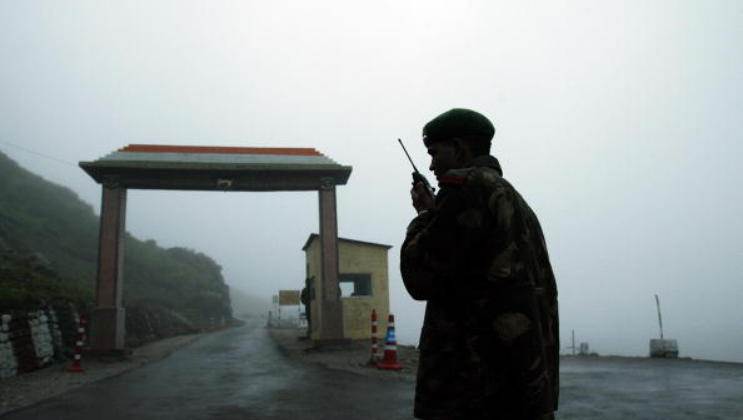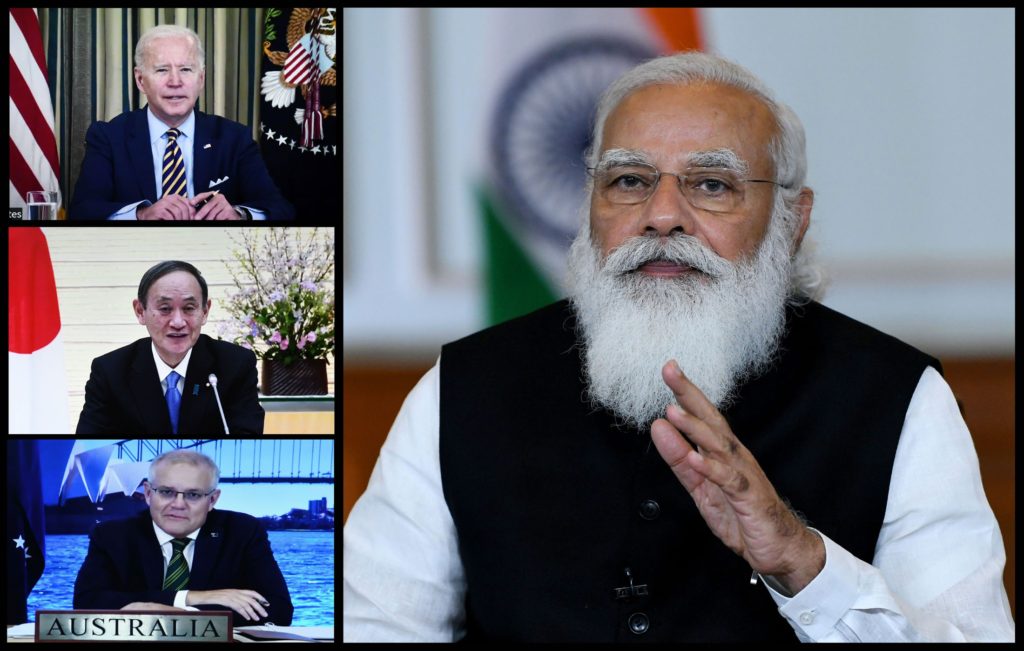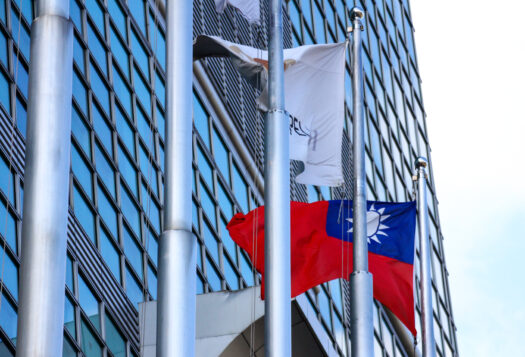
After almost a year-long military stand-off at their disputed border, a complex military disengagement is still underway between India and China in the eastern Ladakh region. The latest press release from India’s Ministry of External Affairs (MEA), following a phone conversation between External Affairs Minister S. Jaishankar and China’s Foreign Minister Wang Yi, noted the “outstanding issues” on the border and stressed that disengagement “remains unfinished”—attesting to the sensitive and nuanced nature of the negotiations process. Although political statements appear optimistic that India and China can stay engaged and address ongoing concerns, the question of how the boundary negotiation process will ultimately frame the “normalization” of India-China ties remains. To what extent is the expectation of resolving “outstanding issues” possible on a practical level, considering the historical complexities attached to the matter?
As the disengagement continues, India has also been pushed to reckon with the future of its relationship with China and other powers in the region. Post-Galwan, India has begun refocusing its multi-alignment strategy into a “pointed-alignment” by prioritizing more serious defense, security, and economic ties with specific countries in Indo-Pacific and beyond that are widely perceived as in broader strategic competition with China. Such Indian activism to have more pointed engagement, especially with the United States, Japan, and Australia (the Quad partners) certainly unnerves Beijing, and has long-term implications for the future of India-China relations.
Boundary Negotiations: Negation and the Fallout
The boundary dispute has long been a central point of contention in India-China relations. Under the leadership of Prime Minister Narendra Modi and President Xi Jinping, reaching an “acceptable settlement” with both diplomatic and political overture to the boundary dispute became a focal point of their negotiations and interactions. Both countries re-emphasized managing the differences pertaining to the dispute through the special representatives (SRs) meeting and stressed cooperation on long-term strategic issues. More importantly, both sides hoped that building political chemistry—through informal summits like those seen in Wuhan and Chennai—could bring the bilateral ties to a “new stage”.
However, the Galwan valley clash made it glaringly apparent that such political overtures are neither entirely practical nor functionally feasible. Now mostly seen as a turning point (primarily from the Indian point of view) in India-China ties and an indication of their collapsing “developmental partnership,” the clash brought to the forefront the deeply-rooted nature of the border dispute in India-China ties. However, while a turning point, the Galwan clash and the ongoing military stand-off should not be viewed in isolation but must be assessed in conjecture with the increasingly frequent standoffs in recent years with Chinese intent to change the status quo in different sectors of the India-China boundary. In this context, the Galwan clash only demonstrated that the outstanding border-related issues between India and China would remain unresolved and central to their bilateral—and regional—dynamics.
The Galwan clash and the ongoing military stand-off should not be viewed in isolation but must be assessed in conjecture with the increasingly frequent standoffs in recent years with Chinese intent to change the status quo in different sectors of the India-China boundary.
As reflected in the 11th Corps Commander talks, held on April 9, 2021, there are continued efforts to espouse upholding “peace and tranquility” on the border while focusing on guidance from the consensus of national leaderships. Yet, China has reportedly remained at four key friction points—including the Patrolling Point 15 (PP15) in Hot Springs and the PP17A near Gogra post. While the September 2020 five-point statement between China and India called for quick disengagement of troops, it was followed only weeks after by a Foreign Ministry statement from China noting that it did not recognize the “so-called ‘Ladakh Union Territory.’” In response, an MEA’s official response on September 29, 2020, categorically blamed China for not showing “willingness” to effectively pursue the border resolution (and negotiation) process. The diplomatic barbs and ongoing friction in disengagement underscore the contrast between the standard political language stressing “peace and tranquility” and the challenges on the border.
Similarly, addressing “outstanding issues” is recurrent rhetoric in India-China boundary negotiation processes. Over the years, various mechanisms (such as SRs, a Working Mechanism for Cooperation and Communication, and Annual Defense Dialogues), confidence-building measures (CBMs), agreements, and declarations (1993, 1996, 2003, 2005, and 2013) have become usual referral points to the dispute. Informal summits like the “Wuhan Spirit”, Chennai Summit (Mahabalipuram), and “Astana Consensus” have further sought to address the boundary dispute through a confidence-building note at the leadership level. Yet, despite several such mechanisms, agreements, CBMs, and “informal summits”, both sides have remained at an impasse—indicating their lack of actual military, diplomatic and political will, with the border conflict looking increasingly irreconcilable despite earlier optimistic attempts. Until the LAC’s demarcation is defined—which requires political, intense diplomatic, and on-ground military will and coordination—it is becoming apparent that existing mechanisms cannot perhaps effectively solve the dispute.

Negating the Chinese Role and Rise?
Post-Galwan, the question remains whether India and China have the political will to de-escalate, enduringly resolve the border dispute, and normalize ties. For China, the boundary dispute settlement may reflect its aim to tilt the power balance in its favor by emerging as a “winner” in the negotiations. Beijing’s new and explicit unilateral territorial claims, such as to the whole Galwan valley in June 2020 and claims to territory in Bhutan as it supposedly pulled troops back from the region, suggest that a peaceful settlement is not a priority for Xi Jinping’s China. Yet, India has not helped the cause of finding a political and practical settlement; Indian construction in the region and, according to the Chinese sources, its intrusion into Chinese territory have been a security concern for Beijing. As a rising power currently under a nationalist government looking to cement its global posture, India’s approach of strategic defiance to the tension is drawn on such contours, aimed at negating Chinese interests while securing and promoting its own. More than this, if anything, China’s national negation by not acknowledging India’s rising prominence in regional and global affairs is fast becoming a key strategic thread in India-China ties.
China’s current assertive strategies vis-à-vis India must also be considered in the context of its regional aggressive tactics. Chinese actions in the South China Sea, claims in the East China Sea and Taiwan Strait, the crackdown in Hong Kong, and its ever-growing military and economic clout highlight Beijing’s revisionist outlook towards its neighbors. For Xi, the current geopolitical climate constitutes an ideal opportunity for China to assert itself and mark the authority of the Communist Party of China (CPC). Mindful of United States’ aims to assemble India as a bulwark against China in Asia, Xi seeks to remind the world that despite the pandemic China can independently take on regional conflicts against other powers, even as it attempts to not portray India as a threat.
Similarly, with India under its populist leader Narendra Modi not backing down, any actionable political will to tackle the historic boundary dispute remains absent. India’s overall emerging approach seems to be managing a growing China threat in the neighborhood, rather than managing the negotiation of the boundary and finding a solution. The diplomatic and military uncertainty on how to manage Beijing’s assertive behavior has emerged as a strategic quandary in New Delhi’s China policy, making India move closer to like-minded powers in the Indo-Pacific, with a special emphasis on the Quadrilateral partners such as Australia, Japan, and the United States. In other words, the precariousness of the unresolved conflict has forced India to adjust its China policy, with lost trust, political antagonism, and augmenting militarization at the LAC becoming key threads of concern. As the LAC dispute and China’s rising maritime prowess become urgent military concerns, New Delhi will be forced to prioritize its resources, enhance its military modernization efforts, and expand its maritime ambitions. Keeping in view China’s expanded footprints in the Indian Ocean; India seems to be expanding its naval capability, signing maritime agreements, conducting naval exercises (bilaterally, trilaterally, and multilaterally) with a focus on port developments to maritime modernization.
Furthermore, the post-Galwan period has seen New Delhi recalibrate its multi-alignment strategy into a “pointed alignment” approach wherein it has emphasized security, political and economic ties with key Indo-Pacific partners. Its focus on the Quadrilateral Security Dialogue (Quad) comprising India, Japan, Australia, and the United States, has grown extensively; the grouping has emerged as a key Indo-Pacific security forum, much to China’s chagrin. India also participated in the first Quad Leadership Summit which concluded with the group’s first joint statement since its revival in 2017, highlighting the increasing synergy between the four countries. More importantly, India has supported the Quad’s expanded dialogue efforts by supporting the “Quad Plus” venture, making a strong foreign policy statement in the region.
Should consultations continue and both sides reinvigorate their political will to devise a pragmatic solution in the face of their new reality, what could emerge is a comparatively stable de-facto border with buffer zones, and this might be a winner for China, if not entirely for India.
Simultaneously, India’s elevated bilateral ties with the Quad partners in security, defense, and economic domains are moving ahead. It upgraded ties with Australia to a Comprehensive Strategic Partnership, finalized the Acquisition and Cross-Servicing Agreement (ACSA) with Japan, and inked the Basic Exchange and Cooperation Agreement (BECA) with the United States—marking the fourth foundational pact of India-US ties. The inclusion of Australia in the US-Japan-India joint Malabar naval exercise boosted the Quad’s maritime synergy—India had reportedly rejected Australia’s inclusion in previous years as part of managing relations with China. India’s trilaterals with Australia-Japan, US-Japan, and France-Australia have become prominent overtures marking India’s changing, focused diplomatic outlook. From banning the Chinese applications to execute more purposive partnerships across the Indo-Pacific, India’s current and future plan to support, launch and take forward the Supply Chain Resilience Initiative with Australia and Japan points to New Delhi’s approach of building a stronger narrative that poses challenges to China’s economic moves and strategic motives. This active willingness to engage with Quad partners (and other like-minded states), shows that India’s China diplomacy recognizes Beijing’s assertive actions as a threat to its national and regional security in the post-Galwan era.
A Fractured Future?
Galwan has reinforced a belief within India’s strategic thinking that the boundary dispute cannot be prevented from defining India-China ties. The border situation remains volatile with possibilities of more frequent confrontation. As the Chinese Communist Party prepares to celebrate its centennial in July 2021, and Xi Jinping looks to portray a strong, great Chinese power, Beijing will be ever-more unwilling to show any signs of bending to India’s will or compromising its interests. Moreover, wary of further ingressions and transgressions amidst utterly disintegrated bilateral trust, India cannot rule out a possibility of limited war (or a clash like Galwan) with China, and hence will likely further strengthen border infrastructure, potentially escalating the situation.
Under such conditions, existing India-China mechanisms are becoming outdated and an immediate dispute resolution is unlikely. However, should consultations continue and both sides reinvigorate their political will to devise a pragmatic solution in the face of their new reality, what could emerge is a comparatively stable de-facto border with buffer zones, and this might be a winner for China, if not entirely for India. Essentially, the negations in India-China border negotiations and their national negations to power dynamics within the region make bilateral ties not only difficult to predict but also highly unstable. This unpredictability is fast becoming a new normal in India-China ties.
Editor’s Note: This article appeared as part of our four-part series on the one-year anniversary of the 2020 Sino-Indian border standoff in Ladakh. In this series, contributors discuss the impact of the standoff and clashes in Galwan on China and India’s strategic priorities, threat perceptions, and bilateral relationship in the years ahead.
***
Click here to read this article in Urdu.
Image 1: DESHAKALYAN CHOWDHURY/AFP via Getty Images
Image 2: Prime Minister’s Office, India via Press Information Bureau


